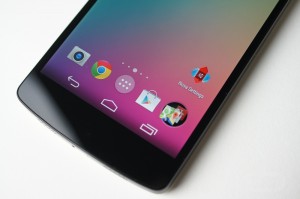How To Disable Touch Vibration on Nexus 5
 Touch vibration is a feature in the Nexus 5 that automatically triggers a short vibration when you touch the display. This feature isn’t limited strictly to the Nexus 5, however, as most modern-day smartphones (both Android and Apple iOS) use it. The purpose of touch vibration is to confirm the user’s touch input. When you feel the vibration, you know the system registered your input. However, touch vibration can prove to be annoying at times, which is why some users prefer to disable it.
Touch vibration is a feature in the Nexus 5 that automatically triggers a short vibration when you touch the display. This feature isn’t limited strictly to the Nexus 5, however, as most modern-day smartphones (both Android and Apple iOS) use it. The purpose of touch vibration is to confirm the user’s touch input. When you feel the vibration, you know the system registered your input. However, touch vibration can prove to be annoying at times, which is why some users prefer to disable it.
Steps To Disabling Touch Vibration On The Nexus 5
Thankfully, you can disable touch vibration on the Nexus 5 in just a few easy steps. Fire up your Nexus 5 and tap Home > Settings > Language & Keyboard > and tap the “Settings” button next to “Google Keyboard.” You should see an option for “Vibrate on keypress.” Make sure this option is unchecked, at which point you can exit out of the settings. Sorry if you were expecting more, but that’s all it takes to disable touch vibration on the Nexus 5!
From now on, anytime you touch the Nexus 5’s display it won’t trigger a vibration. You can test it out by firing up Chrome (or any other app for that matter). Assuming you followed the steps mentioned above, Chrome should open without causing a vibration. If does vibrate, go back and make sure followed the steps.
Why Would I Want To Disable Touch Vibration?
This is a question many people are probably wondering. After all, touch vibration is a nifty feature that doesn’t cause any adverse effects, right? Most users choose to disable it for one of two different reasons: they either don’t like the way it feels, or they want to improve the battery life of their device. Each time the device vibrates, it uses battery; therefore, disabling touch vibration will prolong your device’s battery charge, allowing you to get a little more use out of a single charge.
It’s important to note that third-party keyboard apps, such as Swype and Swiftkey, use their own touch settings. So even if you follow the steps outlined above, you may still notice a vibration when you touch your Nexus 5’s display. To disable touch vibration with third-party keyboard apps, you’ll have to access the respective app’s settings.
Did this tutorial work for you? Let us know in the comments section below!









